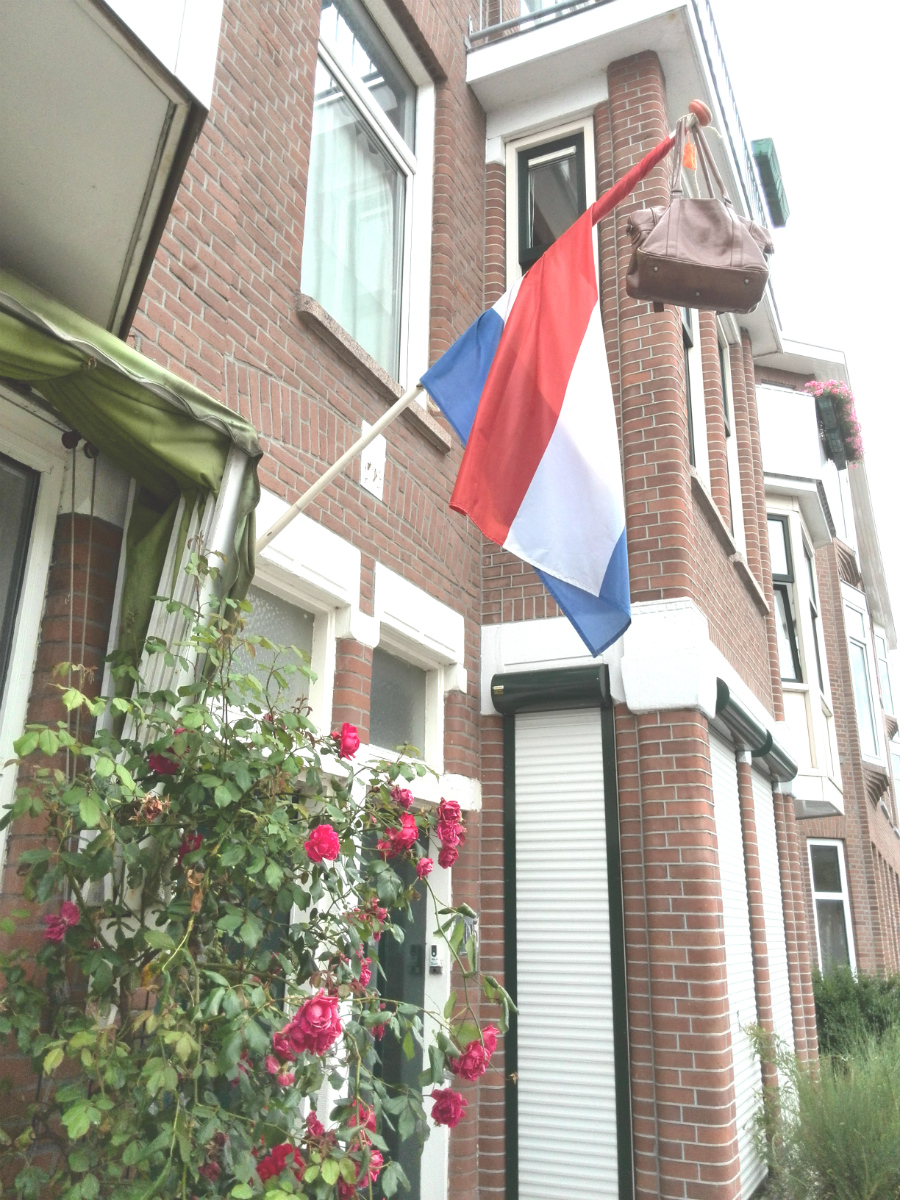For a nation that’s supposed to have raised itself above petty nationalist sentiment, the Dutch have a curious affinity for flying the flag. Since moving to The Hague less than two months ago I’ve lived through four official flag days and a host of unofficial ones. Red, white and blue flags flutter from balconies, from the roofs of shops (the hardware store round the corner has three six), from restaurants and cafes. When teenagers pass their exams they ‘hang the flag out’ in celebration, often with their old school bag perched on the end of the pole. The first herring batch of the season is landed with much pomp and ceremony in mid-June, on a day known as “vlaggetjesdag” – Flags Day – when the Dutch congregate on the quayside in Scheveningen to eat raw fish with onions, drink beer and potter around traditional market stalls without buying anything. And, of course, there is a football tournament on at the moment, which means streets are festooned with orange bunting, ribbons, banners – and flags.
This being the Netherlands, the etiquette of flag-waving is meticulously regulated. There is even a page on the Dutch government’s website dedicated to the question: “When can I hang out the national flag?” The short answer is “whenever you like”, but the full text runs to 700 words detailing the difference between “limited” and “extensive” flagging, the buildings where flags are obligatory, and the correct proportions for the standard (a ratio of 3:2, should you be inclined to obtain one). Flags should not be raised during the hours of darkness, touch the ground or impede the flow of traffic. Because if there’s one thing even more sacred to a Dutchman than his flag, it’s his bicycle.
The flag is flown on the birthdays of the king and queen, their daughters, Veterans’ Day at the end of June and, perhaps most poignantly, Liberation Day – May 5 – which marks the end of the Nazi occupation in 1945. The day before is known as Dodenherdenking (Remembrance Day) when all the victims of war are remembered, and flags are flown at half-mast. And yes, the Dutch have a protocol for that as well:
“If the flag is to be flown at half mast, it should first be fully raised. Thereafter the flag should be slowly and stately lowered until the middle of the flag is at half its normal height. The flag is then secured to the flag line. The flag should not be tied. On lowering a flag from half mast it should be slowly and stately raised to full mast before being taken down in the same manner.”

The other curiosity is that while most households seem to own a flag, I’ve yet to see one for sale. Are they handed out on the last day of secondary school? And why are they all so clean and impeccably preserved? I imagine that on May 3, the day before Dodenherdenking, the Netherlands reverberates to the thrum of washing machines as every Dutchman and woman over the age of 25 diligently washes, irons and presses their flag ready to hang it at half-mast the following morning (but not before dawn, obviously).

Correction: This article originally stated that the hardware store close to my home had three flags flying from its gantry. In fact it sports six pristine, well-manicured tricolors. My apologies to the owners.
A very entertaining and informative post, Gordon. Your deep affection for your newly adopted country and its people shines through. Rock on, mate.